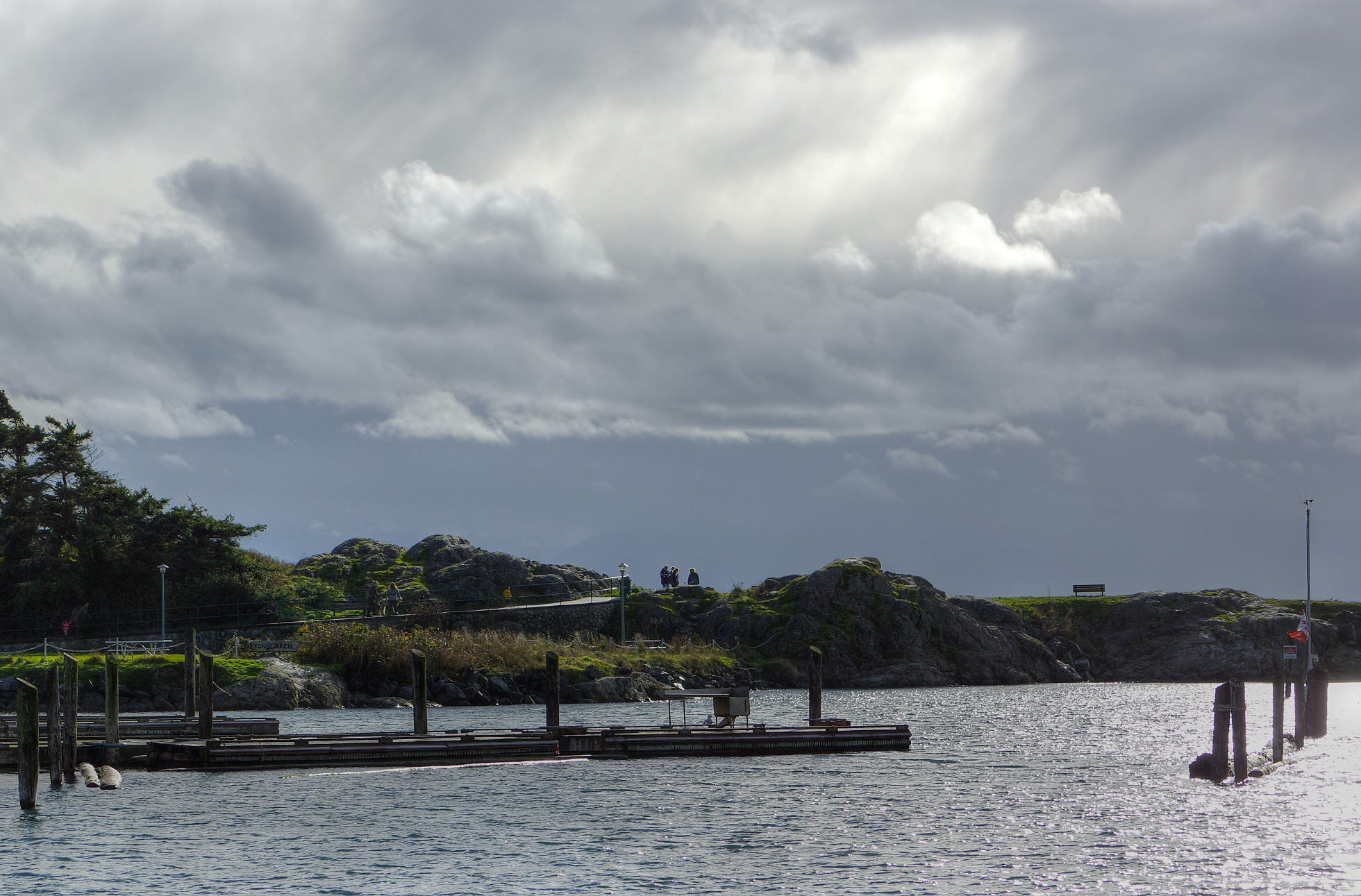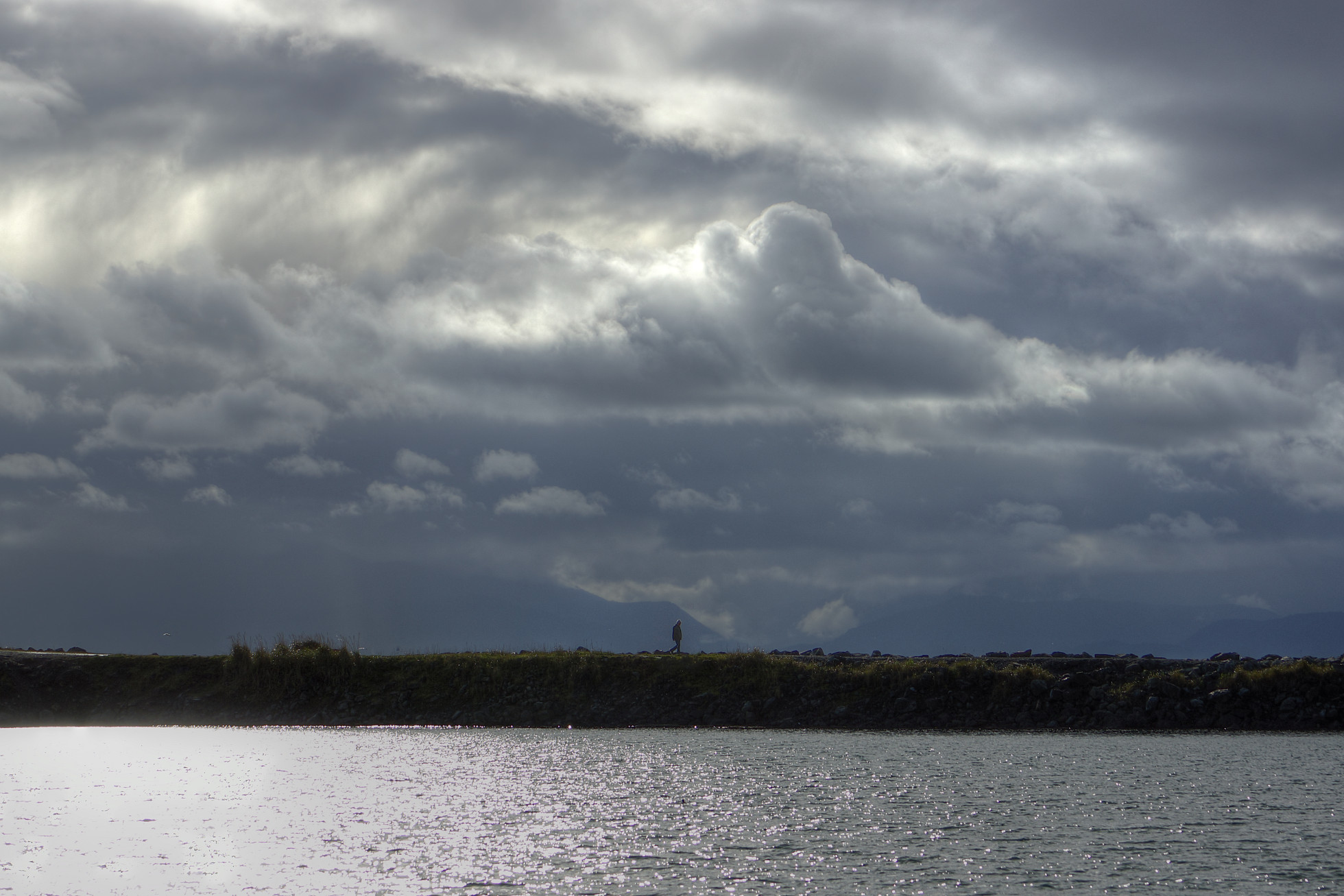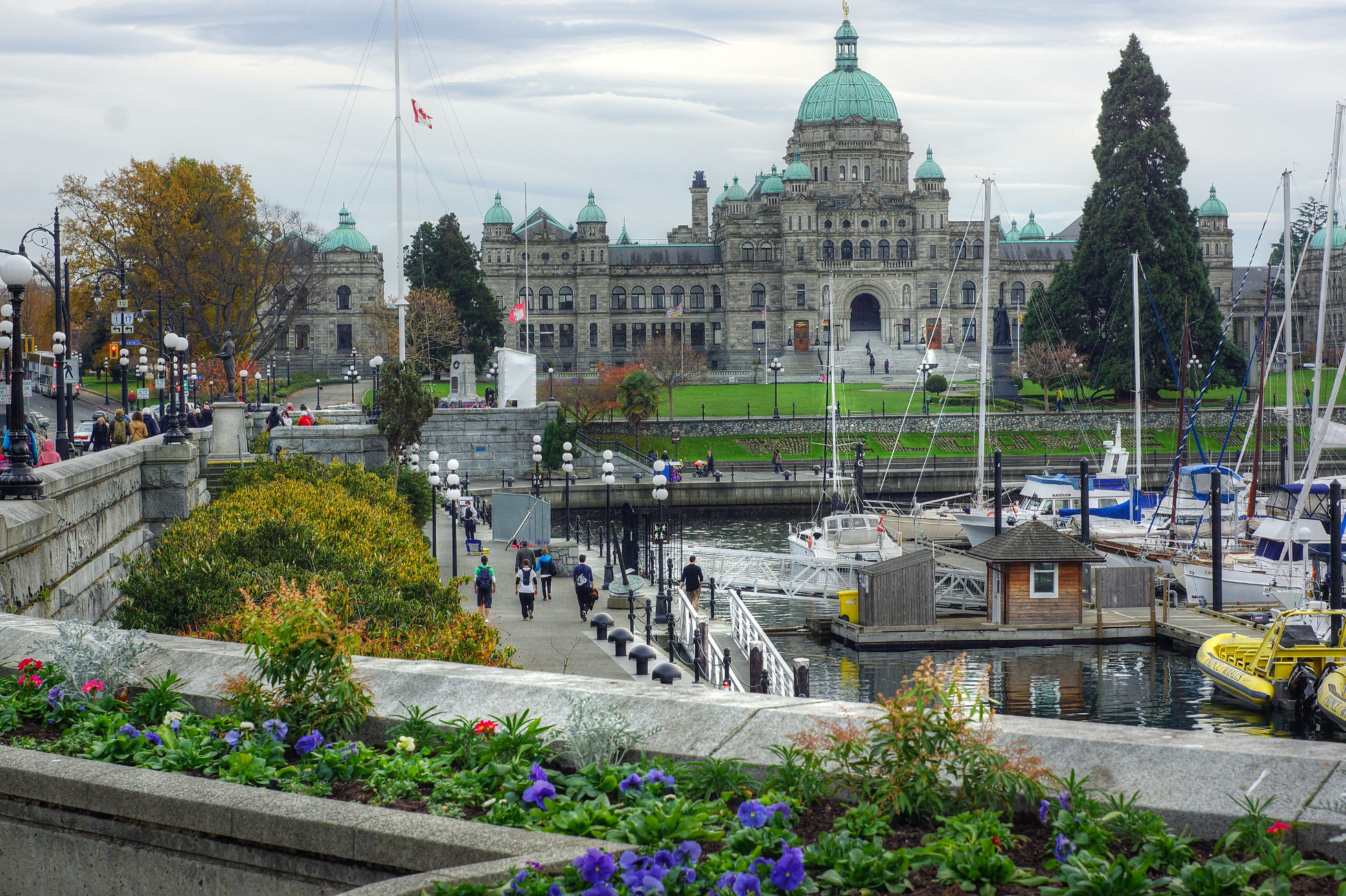
Custom Search
Saturday, November 30, 2013
Brewer's Blackbird (Euphagus cyanocephalus)
This is a female Brewer's Blackbird (Euphagus cyanocephalus). There is generally a small flock of these blackbirds foraging along the shore of Esquimalt Lagoon or sharing some of the food that people like to give to the swans and ducks. Quite often the Brewer's Blackbirds are accompanied by Red-winged Blackbirds and European Starlings. Despite the summery green evident here, this photo was taken about a week ago and the temperature was only a few degrees above freezing.
Friday, November 29, 2013
Thursday, November 28, 2013
Lunch in Good Company
Well, no, I didn't have lunch yesterday with the Queen, but her portrait (above) was nearby while we ate. The dining room was in Victoria's Legislative Assembly Building and is one of Victoria's hidden dining jewels. Food, presentation and service were superb and prices more than reasonable. While the restaurant is meant for the convenience of legislators, it is open to the public. The Queen's portrait is in recognition of her Diamond Jubilee and is a smaller copy of the original that hangs in Ottawa. This one is displayed on the main floor of the legislature.
Wednesday, November 27, 2013
Royal Roads
After I'd had a good look at these clouds and taken this photo you can bet that I was packing up and heading for home. This is the body of water known as Royal Roads. It is offshore of Esquimalt Lagoon. For those of you not familiar with "roads" as a nautical term, here is what Wikipedia has to say:
The term Roads (short for roadstead), as applied to a body of water, is "a partly sheltered area of water near a shore in which vessels may ride at anchor". Signifying the safety of a port, the word "roads" in the nautical terminology of the day meant "a place less sheltered than a harbor where ships may ride at anchor."
Labels:
Esquimalt,
Esquimalt lagoon,
Royal Roads
Tuesday, November 26, 2013
Northern Pintail (Anas acuta)
My visit to Esquimalt Lagoon last week yielded, in addition to Saturday's photo of the Mute Swans, this photo of one of my favorite dabbling ducks, the Northern Pintail (Anas acuta).
Monday, November 25, 2013
Wondering the Streets
I'll admit, once the colder weather arrives I don't venture into the city at night very often but with enough layers of clothing it was quite nice actually. Government Street looks quite inviting all dressed in light for the coming onslaught of Christmas shoppers doesn't it? - Fern
Sunday, November 24, 2013
Tis the Season
Last night was the official beginning of the holiday festivities in Victoria and a big attraction downtown is the ferris wheel in Centennial Square . Lots of people where out and about braving the crisp weather we've been having. Not to worry though, The top shot was a long exposure; it would be quite a ride if it was going that fast! - Fern
Labels:
Centennial Square,
downtown Victoria,
Fern Long,
ferris wheel
Saturday, November 23, 2013
Mute Swans
I was out at Esquimalt Lagoon a few days ago. It's a bird sanctuary and I was wondering what kind of birds were there at this time of year. I didn't see anything surprising but enjoyed these Mute Swans when they came swimming along the shore. Mute Swans are not indigenous and these are descended from escapees from Beacon Hill Park long ago. They have naturalized themselves at Esquimalt Lagoon and also at Albert Head Lagoon just a little further west along the coast.
Labels:
Esquimalt lagoon,
Mute Swan,
Victoria BC Canada
Friday, November 22, 2013
From Songhees Point
Coming home from downtown yesterday I realized it has been some time since I posted a photo of the oldest part of Victoria taken from Songhees Point, so I stopped and took this one. It's quite a warm looking photo but our temperatures have been hovering around freezing in the mornings and just barely above during the rest of the day.
Labels:
Songhees Point,
Victoria BC Canada,
Victoria skyline
Thursday, November 21, 2013
Employee of the Month
I noticed that the birds were behaving irresponsibly with the feeder, eating recklessly and dropping a lot of perfectly good seeds on the ground so hired this squirrel to clean up the mess.
Labels:
Gray Squirrel,
Vic West,
Victoria BC Canada
Wednesday, November 20, 2013
At the Feeder
Fern recently installed a bird feeder in the back yard and I took some time yesterday to observe the surprisingly busy traffic. As well as trying out some new shooting techniques it also enabled me to continue with my quest to learn to distinguish all those little brown birds that populate our environment. Below are four that I have tentatively identified. If you're a birder, please feel free to correct me as I'm still not very confident when it comes to these little brown birds.
| Mistakenly identified as a Pine Siskin. (See note * below) | House Finch |
| Fox Sparrow | Dark-eyed Junco |
Labels:
birds,
Dark-eyed Junco,
Fox Sparrow,
House Finch,
Pine Siskin,
Vic West,
Victoria BC Canada
Tuesday, November 19, 2013
Another View
On Sunday afternoon both Fern and I independently sought the shoreline. Her photo, published yesterday, was taken from Saxe Point Park. I didn't go quite so far west and stopped at Fleming Beach and Macaulay Point Park, and took the photos above and below.
Labels:
Buxton Green,
Esquimalt,
Fleming Beach,
Victoria BC Canada
Monday, November 18, 2013
Painting With Light
This dramatic sky was a sight to behold from Saxe Point Park yesterday. The shifting light changed the scene from moment to moment, and if only the wind hadn't been so bitingly cold we might have stayed longer to watch the show! - Fern
Sunday, November 17, 2013
Shadow and Reflection
City streets transform on black rainy nights into giant black canvasses etched with tree shadows, naked till spring. - Fern
Labels:
dark nights,
Fern Long,
tree shadow,
Victoria BC Canada,
wet streets
Saturday, November 16, 2013
Condos Rising
On the eastern side of the Johnson Street Bridge, old buildings are being refurbished on Lower Johnson, Pandora and Fisgard Streets. On the western side of the bridge the two large condominium developments are coming out of their slump and new buildings are rising, and apparently selling well. "Promontory" is a new building in the Bayview Place Development and kitty-corner to it, Dockside Green is also erecting a new building, already completely sold out.
Those splotches on the photo above are raindrops on the lens. It was dry when I left my house but by the time I got down to Bayview Place it was raining the proverbial cats and dogs. Can't complain - much of the rest of this province is getting snow.
Those splotches on the photo above are raindrops on the lens. It was dry when I left my house but by the time I got down to Bayview Place it was raining the proverbial cats and dogs. Can't complain - much of the rest of this province is getting snow.
Friday, November 15, 2013
House Sparrow
This is a House Sparrow (Passer domesticus), according to Wikipedia, "...the most widely distributed wild bird..." on this planet, though one that has not graced the pages of Victoria Daily Photo in the past, a regrettable omission. Part of my self-imposed discipline as a neophyte birdwatcher is to learn to recognize all the nearly indistinguishable little brown/gray birds that flutter around in the background of our lives here. There are about a half dozen kinds of sparrow around here and a bunch more close relatives such as the Chickadees. The other local challenge is sorting out the gulls - many different species look quite similar and I still can't tell one from the other with any confidence.
Thursday, November 14, 2013
Lower Pandora Do-over
As work on the new Johnson Street Bridge moves ahead other changes are being made to some of the derelict buildings and vacant lots in that area. The above incorporation of an old building's front into a new building is on lower Pandora Street adjacent to Swan's Hotel. Below you can see what it looked like before the above restoration. It looks like they are planning to mimic the old building's front (on the right, above) with a similar facing on the left.Fisgard Street also has a new building. When it is complete I will post a photo. The Janion Hotel is also undergoing complete refurbishment so by next spring Chinatown should be looking quite different with three old eyesores transformed into new residences and business places.
Wednesday, November 13, 2013
Horned Grebe (Podiceps auritus)
Tracking this little bird, a Horned Grebe (Podiceps auritus), down has been a long process because he usually likes to swim and dive far offshore where he is visible but only just. Every day I would go down to the shore and snap a few photos of him but he was never close enough to show the details needed for a clear identification. Until a couple of days ago, that is. There he was, almost spitting distance from the shore, so I hope you enjoy seeing him up close as much as I did.
Tuesday, November 12, 2013
Legislature and Causeway
For all those of you who have begun to think that Victoria is mostly ducks and mushrooms and especially for visitor Matthew Feehan, who requested this photo in a comment, here is a quick look at what downtown Victoria was like on the afternoon of November 11.
Monday, November 11, 2013
Remembrance Day
In Flanders fields the poppies blow
Between the crosses, row on row,
That mark our place; and in the sky
The larks, still bravely singing, fly
Scarce heard amid the guns below.
We are the Dead. Short days ago
We lived, felt dawn, saw sunset glow,
Loved and were loved, and now we lie
In Flanders fields.
Take up our quarrel with the foe:
To you from failing hands we throw
The torch; be yours to hold it high.
If ye break faith with us who die
We shall not sleep, though poppies grow
In Flanders fields.
By John McCrae
Between the crosses, row on row,
That mark our place; and in the sky
The larks, still bravely singing, fly
Scarce heard amid the guns below.
We are the Dead. Short days ago
We lived, felt dawn, saw sunset glow,
Loved and were loved, and now we lie
In Flanders fields.
Take up our quarrel with the foe:
To you from failing hands we throw
The torch; be yours to hold it high.
If ye break faith with us who die
We shall not sleep, though poppies grow
In Flanders fields.
By John McCrae
Labels:
Fern Long,
Remembrance Day,
Victoria BC Canada
Sunday, November 10, 2013
Saturday, November 9, 2013
Mallard Ducks (Anas platyrhynchos)
Friday, November 8, 2013
Mycelium
Thursday, November 7, 2013
Recycling
| When I see something like this I realize that these mushrooms are fungi's version of what used to be a tree. All it needs is a spore and some water and a stump to make something completely new and different. Now that's recycling! |
Labels:
fungi,
Mount Douglas Park,
Pkols
Wednesday, November 6, 2013
Dance-Off!
I am pleased to present a pair of my favorite little diving ducks doing their mating dance. Two male Hooded Mergansers here are competing for the favors of a single rather bored looking female. The dance consists of extending the neck to its maximum length and jerking the head back and forth in an attractive fashion.
Labels:
Hooded merganser,
Victoria BC Canada,
West Bay
Tuesday, November 5, 2013
Amanita muscaria
Here is a kind of mushroom that I look for every year because they are so colorful and have such a long and controversial history. Consequently I was very happy when I was alerted to this group growing in one of Victoria's residential neighborhoods. These beauties are both poisonous and psychoactive. They are called Amanita Muscaria or Fly Agaric and are probably the mushroom that most people think of when they think of wild mushrooms.
Labels:
Amanita muscaria,
Fairfield,
Fly Agaric,
mushrooms,
Victoria BC Canada
Monday, November 4, 2013
The Old and The New
The Vic West Neighbourhood is rapidly changing and the contrast between old and new is quite remarkable. - Fern
Sunday, November 3, 2013
The Disappearing Sun
This weekend we turn the clocks back one hour and face the final stretch of ever shortening days until December 21st, the Winter Solstice. - Fern
Labels:
Fern Long,
forest,
sun shining through trees,
Victoria BC Canada,
winter,
woods
Saturday, November 2, 2013
Colorful Fungi
Above is the first mushroom I spied on my walk around Thetis Lake Park earlier this week and its extraordinary color was only a hint of the wide mycological palette I have experienced over the last few days. Had anyone told me I would be seeing blue or maroon mushrooms this week I would have doubted them. But here's proof. The hobbity mushroom below was photographed in Mount Douglas Park (Pkols).
Labels:
fungi,
Mount Douglas Park,
mushrooms,
Pkols,
Thetis Lake Park,
Victoria BC Canada
Friday, November 1, 2013
Bumper Crop 2
This photo, taken from our ramble yesterday through the woods on Pkols (Mount Douglas), shows some of the wealth of fungi that are exploding out of the ground here right now. Not only are these mushrooms numerous, they are BIG. I have mentioned before that fall is like another spring here with the new growth of ferns, mosses and lichens and that autumn's mushrooms are analogous to spring's wildflowers but I've never seen such an extraordinary number and variety of mushrooms before - I've seen at least fifteen different kinds in the last few days. Today I plan to check out Swan Lake since it is quite a different habitat and may exhibit a few more species to add to my collection.
Labels:
Mount Douglas Park,
mushrooms,
Pkols
Subscribe to:
Posts (Atom)







